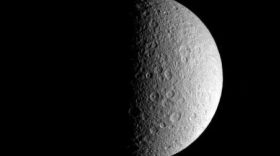Vega, one of the brightest stars, is often mispronounced as "VAY-ga" but should be "WEE-ga," meaning "falling eagle" in Arabic. Visible at nightfall, it shines blue overhead, contrasting with the orange Arcturus. Located 25 light-years away, it’s 58 times brighter than the sun and spins much faster, completing a rotation in just 11 hours. In 12,000 years, Vega will become Earth's pole star. It also displays a rare blueshift, pointing to the direction we're traveling in space.

Play Live Radio
Next Up:
0:00
0:00
Available On Air Stations






